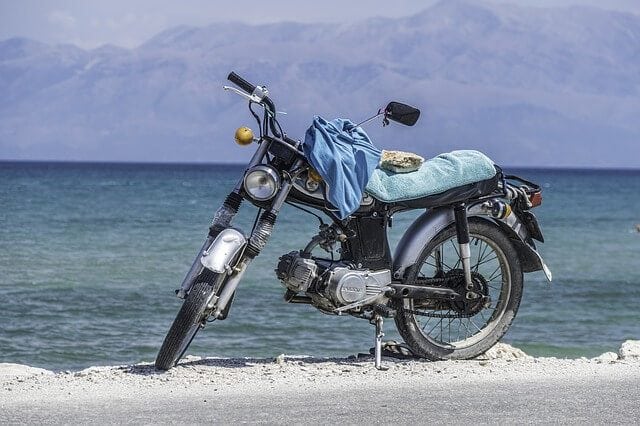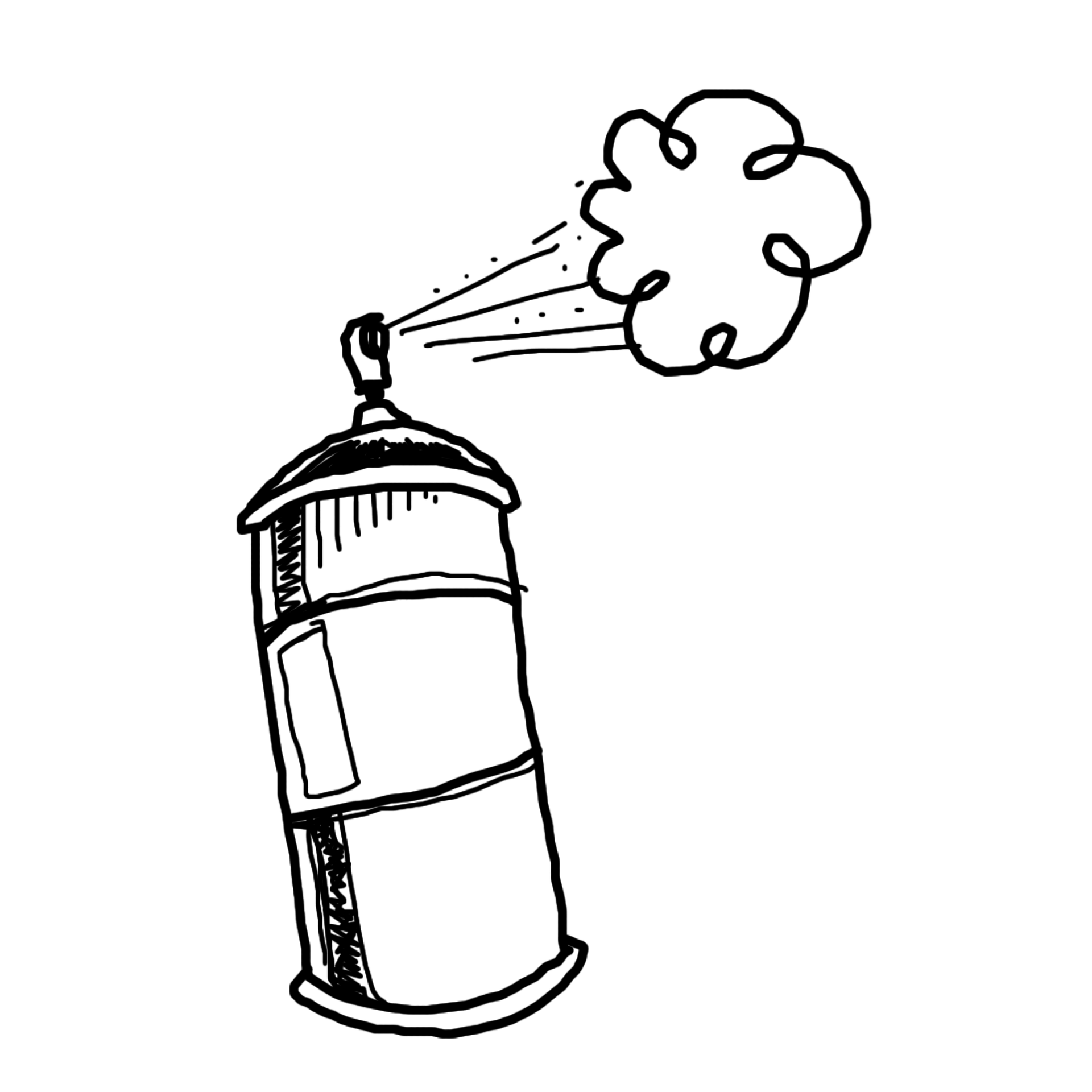Most motorcyclists will approach the thought of painting a motorcycle with the same happy go lucky ideology that a child would have when going to paint a picture.
Unfortunately, it is a little bit harder to paint a motorcycle than it may seem.
Remember that not very many people actually master the painting skills that they learn in school, and you would never wish to ruin the appearance of your precious motorcycle.
In this article we are going to teach you how to paint your motorcycle and make it stand out for the right reasons, not the wrong ones.
Also Read: 11 Best Motorcycle Boots
The Benefits of Painting Your Motorcycle
The main benefit of painting your own motorcycle comes in the form of expense.
Getting a professional paint job can cost thousands, especially if you want to add anything unique to the design.
Painting your own motorcycle gets rid of this excessive cost, as you only need to pay for the materials that you are planning to use.
Another benefit involves the fact that you can do anything that you want to do with your motorcycle paint job.
You can add your own fun and personal touches in the form of a fully-customized job, without having to worry about a professional misunderstanding your overall design idea.
This can be a great way of giving an older motorcycle a new and exciting look.
Before you can even think about getting started on your paint job, you need to make sure that you have access to either an open area or a proper ‘paint booth’.
This is because you need to be able to make a mess, as painting your motorcycle in an area where stains would be absolutely disastrous is a bad idea.
Painting Your Motorcycle
Having your motorcycle professionally re-sprayed is often something that is too expensive for most people to do, but spraying your own motorcycle can be incredibly affordable when it is done right.
There are a number of different products and brands that you could use, each varying in cost and availability.
Using Automotive Spray Paint
Automotive spray paint is one of the best things that you should consider using when it comes to painting your own motorcycle, as it can be bought at almost every automotive supply store.
This is probably because of people having their own DIY adventures without actually putting research into the topic first.
Things as simple as rushing can destroy a paint job that would otherwise be perfect, as time and patience are the keys to successfully using automotive spray paint.
The best and most common method to use to paint your motorcycle involves starting with a high-quality metal etching primer.
Ideally, you should use quite a few layers of this. You should then follow this with a few coats of filler primer.
The filler primer will need to be sanded down after it has been applied, the best way to do this is by using wet sandpaper between each layer.
After all of this has been done, assuming that are no dents present on your motorcycle that need to be filled in with filler, you can begin to add coats of a color of your choice.
Remember that the color will appear stronger in appearance as more layers have been added.
Once you have finished applying the color to your motorcycle, you should consider applying a two-part clear coat.
These come in a spray can and they provide you with a durable and good-looking end result, protecting your motorcycle from exposure to things like gasoline and solvents.
Another option would be to use a urethane clear coat, similar to the type that professionals would use when spray painting motorcycles.
The only problem with these ‘lacquer clears’ that can be found at most automotive supply stores is that they cannot withstand exposure to gasoline or other solvents in the way that a two-part clear coat can.
Quick Tip
To avoid botched or patchy paint jobs, you should warm your can of spray paint up before you begin to use it.
You can do this by holding the automotive spray paint can underneath warm, running water, as this will make the paint flow evenly.
How long does it take for automotive spray paint to dry?
This is a really important question that needs to be considered when you begin to spray paint your motorcycle, as spray paint actually dries really quickly.
Almost all of the spray paints that you can buy are lacquer, meaning that they contain solvents and begin to dry out as the solvents evaporate.
This means that there is no need to wait around for hours as your paint dries, but it is worth remembering that the lacquer will not last long unless you also add a two-part clear coat.
This clear coat will stop the paint from chipping easily, something that can be really irritating if you have only just painted your motorcycle.
How do you paint the different motorcycle parts?
Before you even consider painting all of the different mechanical parts that can be found within your motorcycle, you need to instead consider whether or not you would like to have them painted, plated, or powder coated.
For most people, this decision comes down to cost and what they can actually afford to pay.
Once you have made your decision, preparation becomes the key thing that you really need to spend some time focusing on.
The actual act of coating or painting a mechanical part is actually much less time consuming than the preparation stage, but you will not end up with a good finish if you try to rush the preparation.
Step 1: Clean each individual mechanical part.
This is one of the most important steps and it must not be skipped.
You should also always wear latex gloves from the start of this point onwards.
These gloves protect our hands from the mechanical parts while also protecting the paint from the natural oils and grease that can be found on our hands.
Step 2
If you are planning on painting multiple components, including a tank, then you need to pay careful attention to the tank as an individual item.
You should de-grease it thoroughly, drying it by carefully wiping it with a paper towel.
It is best to use a chemical break cleaner to de-grease the tank, as it will not leave a residue.
Step 3
Do any of your mechanical components have patches of old paint or rust? If they do, then this should ideally be grit blasted away.
Most people do not have the tools needed to do this, so a wire brush could be used instead.
Another alternative would be to use either wet or dry sandpaper.
Step 4
If any indentations are present on the component in question, then you should fill them with something like Bondo.
Before doing this, you should apply an etching primer. Alternatively, the component could be powder coated first.
Step 5
After this, you should re-paint the area with an etching primer.
The top coat of which can be applied after the component has been sanded, you should do this using incredibly fine, wet sandpaper.
Step 6
Now it's time to finish off the job. Most people use paint in their DIY projects, so you can apply several layers until you reach your desired color.
Adding Personal Flair
One of the best things about painting your own motorcycle at home is that you can add a lot of your own personal flair and design when you do so.
Before you even think about approaching your precious motorcycle with a paintbrush you should get some practice done.
You can easily do this by finding a surface that could be painted and wiped clean, an ideal material to do this with would be glass, as it could be used over and over again.
When it comes to finding the right type of paint, you should aim to choose an oil-based enamel paint in a color, or several colors, of your choice.
These are usually used to paint stripes and lines on paintwork that already exists, opposed to clean surfaces that have never been painted.
The brush that you decide to use when painting is also really important, as some brushes are capable of holding more paint than others.
When painting lines, the line needs to have a continuous appearance.
This means that you cannot afford to keep stopping and dipping your paintbrush in paint each time you run out.
One of the best brushes to do this with would have to be a sword-shaped striking brush.
These are usually made out of natural hair and have the ability to hold a really large amount of paint.
This ability enables you to paint a continuous stripe or line without the need to use more paint.
Quick Tip
You can never forget the power of masking tape and stencils when it comes to painting your own designs.
This includes when painting stripes and other shapes, as masking tape can be used as a guideline to help you keep your lines straight.
If you want to paint a specific shape, then you could either buy a stencil online or make one of your own.
Painting Safety and Tips
Never forget to wear safety equipment when painting either your motorcycle or individual parts.
You have to remember that a lot of spray paints do contain toxic chemicals that can be really dangerous when they are inhaled, some are even capable of causing serious respiratory problems.
If you are inside, make sure that you have some oscillating fans.
Oscillating fans are really important as they can help get rid of some of the toxic fumes that appear due to the spray paint.
This can stop you from inhaling them, especially if you are in a poorly ventilated area.
Even if you do have oscillating fans, you still need to wear a face mask.
Do not try to spray paint your motorcycle in an area that you want to keep clean.
One of the jobs of spray painting is that there is no way to keep the area surrounding you perfectly clean.
Spray paint is also capable of staining a lot of different materials. Due to this, some people use specially designed ‘paint booths’.
Purchase some sheets of plastic.
Sheets of plastic can be really useful if you do want to keep your surroundings ‘relatively’ clean.
You can use either nails or thumbtacks to attach the sheets to the walls or the floor.
What are you waiting for?
The best thing about painting your own motorcycle is that you get to add your own personal touch to it.
This is not the same as the ‘personal touch’ that you would describe to a professional, as doing something yourself makes it so much more personal.
You can add all of the little details and designs that you think of, without worrying about having to describe them to someone else.
As long as you are willing to do a decent amount of preparation, you will be left with a rather beautiful motorcycle.
When done right, a lot of DIY paint jobs end up looking like they could have been done in a professional environment. Plan ahead, be patient and get painting.
Also, check out this video by Custom Spray Mods on how to paint your motorcycle parts:
References:

David Williams is an author with a passion for motorcycles and all things related to the world of two-wheeled vehicles. His expertise is evident on his website, The Moto Expert, where he shares his knowledge and insights with fellow enthusiasts. Follow him on social media to stay up-to-date on the latest motorcycle news, reviews, and trends. Whether you’re a seasoned rider or just starting out, David’s content is sure to inform and entertain. Join his community and become a part of the conversation today.





